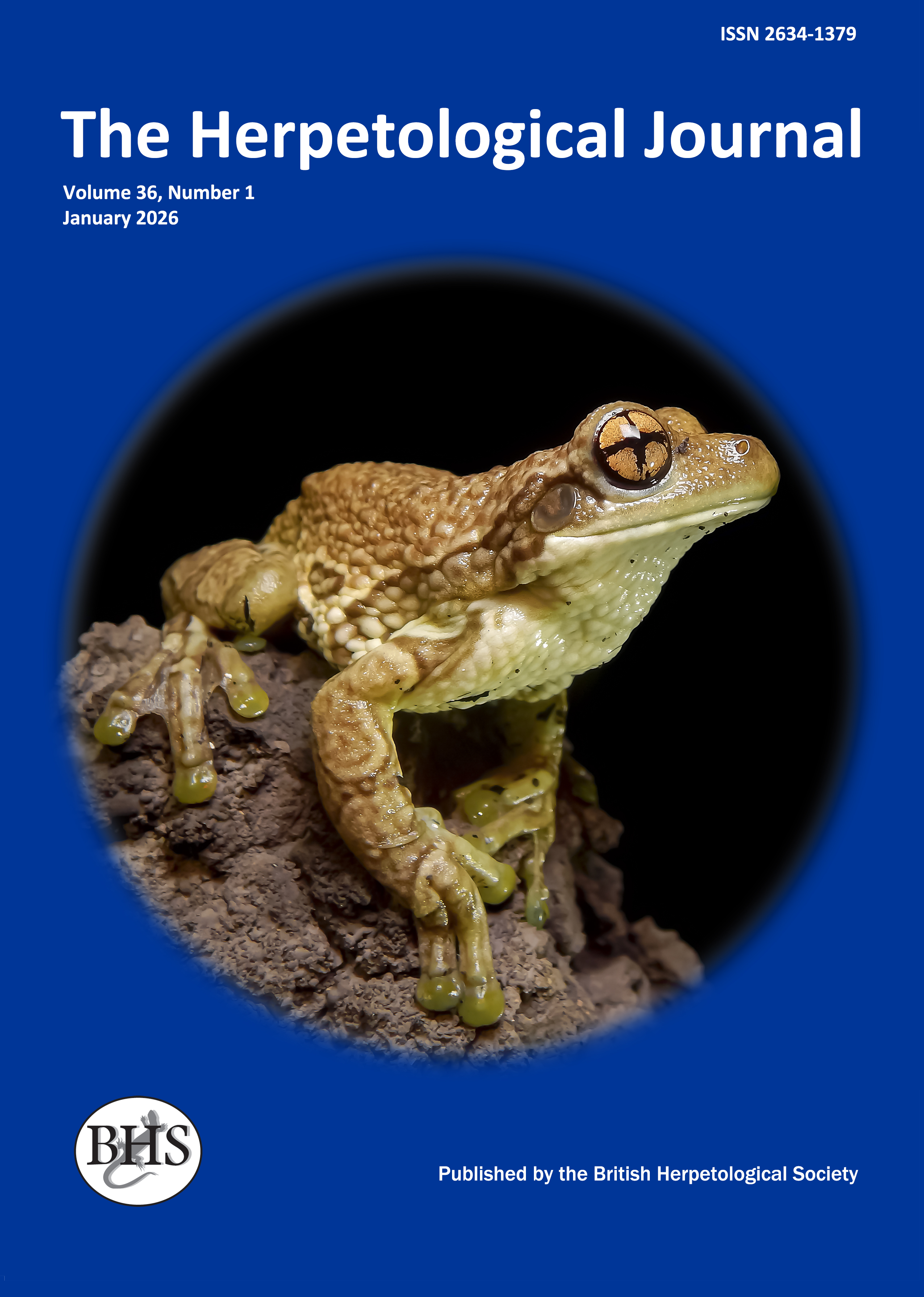
The Herpetological Journal
The Herpetological Journal is the Society's prestigious quarterly scientific journal. Articles are listed in Biological Abstracts, Current Awareness in Biological Sciences,Current Contents, Science Citation Index, and Zoological Record.
ISSN 0268-0130
2023 Impact Factor for the Herpetological Journal is 1.1, with the Journal sitting just below Quartile 2 in Zoology, at percentile 46.9
pdf 09. Reproductive ecology of a Mediterranean ratsnake, the ladder snake Rhinechis scalaris (Schinz, 1822)
2218 downloads
Open Access
pp. 177-182
Authors: Pleguezuelos, Juan M. & Feriche, Mónica
Abstract: Organisms that produce more than one newborn at every reproductive event must choose between two options with respect to their reproductive output: to produce a few large or many small young. The decision will be influenced by the spectrum of prey sizes available to young. The ladder snake (Rhinechis scalaris), a heavy-bodied Mediterranean colubrid, is well suited for the study of its reproductive ecology under this cue: the species consumes only endothermic prey and, thereafter, hatchlings of this gape-size-limited predator must be large enough to prey on small mammals. We analysed the reproductive ecology of this species, a quasi-endemic to the Iberian Peninsula, by studying a large sample of specimens collected in the south-eastern Iberian Peninsula. Most adult females (83.3%) reproduced in sequential years, with vitellogenesis beginning in early spring, and oviposition occurring in the first half of July. In contrast to the general rule for most temperate snakes, no depletion in fat bodies was observed during the period of vitellogenesis, females exhibiting a very high level of fat-body reserves throughout all months of the activity period. When compared with other Mediterranean species, hatching occurred very late in the activity season (October), newborns were rather heavy bodied, with very high fat-body levels, and apparently did not feed until the following spring. From our dataset, we suggest that female R. scalaris produce hatchlings large enough to enter hibernation without feeding, perhaps increasing in this way the survival rate of juveniles in their first calendar year. They probably need to devote their reserves at hatching to growth and to better face their first, bulky prey.
Keywords: HATCHING TIME, HATCHLING SIZE, COLUBRID, FAT BODIES

